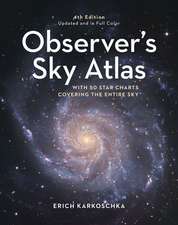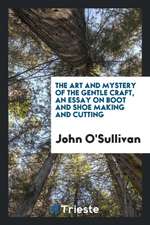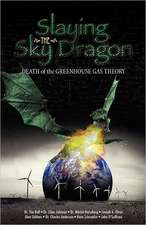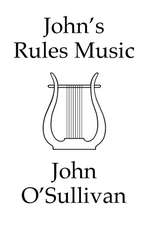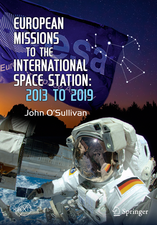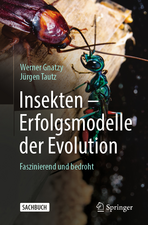Japanese Missions to the International Space Station: Hope from the East: Springer Praxis Books
Autor John O'Sullivanen Limba Engleză Paperback – 4 apr 2019
Japan has a rich history of human spaceflight, flying in space with both NASA and the Soviet/Russian space agencies over the years. This book tells the story of the JAXA astronauts who have visited the International Space Station and how they have lived on board, helped construct the space laboratory and performed valuable scientific experiments.
JAXA has contributed the largest single module to the ISS: the Kibō (Hope) science laboratory with its Logistics Module, Exposed Facility and robot arm. JAXA supplies the station with cargo and supplies on its automated cargo spacecraft, the H-II Transfer Vehicle (HTV), but it is the human endeavour that captures the imagination. From brief visits to six-month expeditions, from spacewalking to commanding the Earth’s only outpost in space, JAXA astronauts have played a vital role in the international project.
Extensive use of colour photographs from NASA and JAXA depicting the experiments carried out and the phases of the ISS construction, together with the personal stories of the astronauts’ experiences in space, highlight the crucial part the Japanese have played in human spaceflight.
Din seria Springer Praxis Books
-
 Preț: 294.46 lei
Preț: 294.46 lei -
 Preț: 223.45 lei
Preț: 223.45 lei -
 Preț: 193.12 lei
Preț: 193.12 lei -
 Preț: 167.85 lei
Preț: 167.85 lei -
 Preț: 288.98 lei
Preț: 288.98 lei -
 Preț: 323.74 lei
Preț: 323.74 lei -
 Preț: 401.38 lei
Preț: 401.38 lei -
 Preț: 264.12 lei
Preț: 264.12 lei - 8%
 Preț: 513.00 lei
Preț: 513.00 lei -
 Preț: 190.01 lei
Preț: 190.01 lei -
 Preț: 218.16 lei
Preț: 218.16 lei -
 Preț: 312.06 lei
Preț: 312.06 lei - 17%
 Preț: 414.05 lei
Preț: 414.05 lei -
 Preț: 216.41 lei
Preț: 216.41 lei -
 Preț: 262.27 lei
Preț: 262.27 lei -
 Preț: 264.35 lei
Preț: 264.35 lei -
 Preț: 167.63 lei
Preț: 167.63 lei -
 Preț: 284.81 lei
Preț: 284.81 lei -
 Preț: 259.08 lei
Preț: 259.08 lei -
 Preț: 305.47 lei
Preț: 305.47 lei -
 Preț: 244.14 lei
Preț: 244.14 lei -
 Preț: 227.85 lei
Preț: 227.85 lei -
 Preț: 285.25 lei
Preț: 285.25 lei -
 Preț: 295.56 lei
Preț: 295.56 lei -
 Preț: 357.17 lei
Preț: 357.17 lei -
 Preț: 275.79 lei
Preț: 275.79 lei -
 Preț: 257.08 lei
Preț: 257.08 lei -
 Preț: 349.71 lei
Preț: 349.71 lei -
 Preț: 272.45 lei
Preț: 272.45 lei -
 Preț: 270.27 lei
Preț: 270.27 lei - 8%
 Preț: 456.51 lei
Preț: 456.51 lei -
 Preț: 352.34 lei
Preț: 352.34 lei - 8%
 Preț: 394.80 lei
Preț: 394.80 lei -
 Preț: 320.65 lei
Preț: 320.65 lei -
 Preț: 325.29 lei
Preț: 325.29 lei -
 Preț: 253.11 lei
Preț: 253.11 lei -
 Preț: 192.86 lei
Preț: 192.86 lei -
 Preț: 313.40 lei
Preț: 313.40 lei -
 Preț: 150.51 lei
Preț: 150.51 lei -
 Preț: 233.34 lei
Preț: 233.34 lei -
 Preț: 286.78 lei
Preț: 286.78 lei -
 Preț: 212.01 lei
Preț: 212.01 lei -
 Preț: 366.83 lei
Preț: 366.83 lei -
 Preț: 299.99 lei
Preț: 299.99 lei -
 Preț: 232.27 lei
Preț: 232.27 lei -
 Preț: 284.58 lei
Preț: 284.58 lei -
 Preț: 212.45 lei
Preț: 212.45 lei -
 Preț: 159.81 lei
Preț: 159.81 lei -
 Preț: 349.48 lei
Preț: 349.48 lei - 20%
 Preț: 2061.64 lei
Preț: 2061.64 lei
Preț: 223.01 lei
Nou
Puncte Express: 335
Preț estimativ în valută:
42.68€ • 46.07$ • 35.79£
42.68€ • 46.07$ • 35.79£
Carte disponibilă
Livrare economică 28 martie-11 aprilie
Preluare comenzi: 021 569.72.76
Specificații
ISBN-13: 9783030045333
ISBN-10: 3030045331
Pagini: 390
Ilustrații: XXIV, 311 p. 149 illus. in color.
Dimensiuni: 168 x 240 x 12 mm
Greutate: 0.64 kg
Ediția:1st ed. 2019
Editura: Springer International Publishing
Colecția Springer
Seriile Springer Praxis Books, Space Exploration
Locul publicării:Cham, Switzerland
ISBN-10: 3030045331
Pagini: 390
Ilustrații: XXIV, 311 p. 149 illus. in color.
Dimensiuni: 168 x 240 x 12 mm
Greutate: 0.64 kg
Ediția:1st ed. 2019
Editura: Springer International Publishing
Colecția Springer
Seriile Springer Praxis Books, Space Exploration
Locul publicării:Cham, Switzerland
Cuprins
Foreword.- Preface.- Acknowledgements.- About the author.- Acronyms.- Part 1: Background.- Chapter 1:Before ISS.- Chapter 2: Spacecraft.- Part 2: Missions.- Chapter 3: STS-92.- Chapter 4: STS-114.- Chapter 5: STS-123.- Chapter 6: STS-124.- Chapter 7: STS-119, Expeditions 18, 19 and 20, STS-127.- Chapter 8: Soyuz TMA-17, Expeditions 22 and 23.- Chapter 9: STS-131.- Chapter 10: Soyuz TMA-02M, Expeditions 28 and 29.- Chapter 11: Soyuz TMA-05M, Expeditions 32 and 33.- Chapter 12: Soyuz TMA-11M, Expeditions 38 and 39.- Chapter 13: Soyuz TMA-17M, Expeditions 44 and 45.- Chapter 14: Soyuz MS-01, Expeditions 48 and 49.- Chapter 15: Soyuz MS-07, Expeditions 54 and 55.- The Future.- Bibliography.- Image links.- Appendix: Japanese Missions to the ISS.- Index
Notă biografică
John O’Sullivan BE, Dip Phys Sci, Dip PM, CEng MIEI, PMP, FSP,CMSE® studied Electrical Engineering at University College Cork. He has over 20 years’ experience in the automation and control sector delivering solutions to the life-science industry in Ireland. He is a Chartered Engineer with Engineers Ireland, a Project Management Professional with the Project Management Institute and a certified Functional Safety Professional. He has always had a fascination with aviation and space, leading him to gain his PPL in 2003 and to study Astronomy and Planetary Science with the Open University. Since 2010 he has been awarded a Certificate in Astronomy and Planetary Science and a Diploma in Physical Science by the OU, as well as a Diploma in Project Management from the Cork Institute of Technology. He was an unsuccessful candidate for the ESA Astronaut Corps in 2008.
He wrote his first book, In the Footsteps of Columbus, European Missions to the International SpaceStation, published in 2016. He has also had articles published in BIS Spaceflight magazine and in Engineers Ireland’s Engineers Journal.
Textul de pe ultima copertă
Japan has a rich history of human spaceflight, flying in space with both NASA and the Soviet/Russian space agencies over the years. This book tells the story of the JAXA astronauts who have visited the International Space Station and how they have lived on board, helped construct the space laboratory and performed valuable scientific experiments.
JAXA has contributed the largest single module to the ISS: the Kibō (Hope) science laboratory with its Logistics Module, Exposed Facility and robot arm. JAXA supplies the station with cargo and supplies on its automated cargo spacecraft, the H-II Transfer Vehicle (HTV), but it is the human endeavour that captures the imagination. From brief visits to six-month expeditions, from spacewalking to commanding the Earth’s only outpost in space, JAXA astronauts have played a vital role in the international project.
Extensive use of colour photographs from NASA and JAXA depicting the experiments carried out and the phases of the ISS construction, together with the personal stories of the astronauts’ experiences in space, highlight the crucial part the Japanese have played in human spaceflight.
Caracteristici
Outlines the Japanese contribution to development and operation of the International Space Station Covers approximately 1,100 days of flight time and 13 missions Demonstrates the type and level of international cooperation in the space program of today Serves as a reference for JAXA missions Discusses how Japan also provides a vital logistics role with the unmanned supply spacecraft H-II Transfer Vehicle

